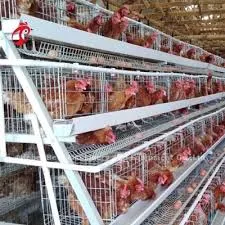Efficient Chicken Feather Removal Machine for Poultry Processing Needs
Nov . 10, 2024 17:53 Back to list
Efficient Chicken Feather Removal Machine for Poultry Processing Needs
The Innovations in Poultry Feather Plucking Technology
The poultry industry has seen significant advancements in recent years, particularly in the processing phase where technologies aimed at feather plucking are evolving rapidly. Feather plucking is a crucial process in poultry processing, responsible for removing the feathers from the birds after they have been slaughtered. Innovations in this field are driven by the need for efficiency, hygiene, and cost-effectiveness, as well as growing concerns about animal welfare and environmental sustainability.
Historically, feather plucking was performed manually, which was labor-intensive and time-consuming. Workers would meticulously remove feathers by hand or use simple tools, resulting in slower processing times and higher labor costs. However, the modern poultry industry demands faster processing to meet increasing consumer demand. Consequently, automation has become a game-changer.
The Innovations in Poultry Feather Plucking Technology
In addition to efficiency gains, modern feather plucking machines also address hygiene concerns. In traditional manual plucking methods, the risk of contamination was considerable, especially when proper sanitary measures were not observed. Automated systems are designed to operate under strict hygiene standards, utilizing materials that are easier to clean and sanitize. Many manufacturers now incorporate features that minimize contact with the birds before and after plucking, reducing the risk of cross-contamination.
poultry feather plucker

Moreover, advancements in feather plucking technologies have also focused on reducing environmental impact. Feathers, as a byproduct of poultry processing, can create waste management challenges. Innovative approaches are now being employed to utilize these feathers, which are primarily made of keratin. Some poultry processing plants are recycling feathers into useful products, such as feather meal, which can be used as animal feed or incorporated into biodegradable plastics. This not only reduces waste but also maximizes resource utility, aligning with sustainable practices in the poultry industry.
Consumer awareness and demand for high-quality poultry products have also influenced feather plucking technologies. Today's machines not only prioritize speed and efficiency but also ensure the quality of the final products. Advanced pluckers are capable of providing a cleaner and more uniform product while keeping the skin intact, which is crucial for the end product’s appearance and marketability. Manufacturers are continually refining their technologies to ensure minimal damage during the plucking process, thus maintaining the quality of the poultry meat.
Moreover, the integration of productivity software and data analytics into poultry processing allows operators to better monitor and control the plucking process. Real-time data can help identify bottlenecks or issues in the feather plucking line, enabling prompt adjustments that can lead to improved efficiency. This technological fusion transforms the traditional poultry processing line into a streamlined, data-driven operation.
The future of poultry feather plucking technology is bright, with ongoing research and development aimed at further improving processing efficiency and sustainability. Emerging technologies like artificial intelligence and machine learning are expected to play crucial roles in optimizing the feather plucking process and predicting outcomes based on historical data. Additionally, innovations in robotics could provide further enhancements, leading to more precise and customizable feather removal techniques.
In conclusion, the evolution of poultry feather plucking technology epitomizes the industry's commitment to efficiency, hygiene, and sustainability. From manual methods to automation, the changes reflect a broader trend in the food industry toward modernization and innovation. As the poultry industry continues to adapt to consumer needs and environmental challenges, feather plucking technology will undoubtedly play a vital role in shaping the future of poultry processing. With these advancements, the industry not only enhances productivity but also contributes to a more sustainable and responsible food system.
-
Automatic Feeding Line System-Pan Feeder Nipple Drinker|Anping County Yize Metal Products Co., Ltd.
NewsJul.29,2025
-
Hot Sale 24 & 18 Door Rabbit Cages - Premium Breeding Solutions
NewsJul.25,2025
-
Automatic Feeding Line System Pan Feeder Nipple Drinker - Anping County Yize Metal Products Co., Ltd.
NewsJul.21,2025
-
Automatic Feeding Line System Pan Feeder Nipple Drinker - Anping County Yize Metal Products Co., Ltd.
NewsJul.21,2025
-
Automatic Feeding Line System - Anping Yize | Precision & Nipple
NewsJul.21,2025
-
Automatic Feeding Line System - Anping Yize | Precision & Nipple
NewsJul.21,2025






